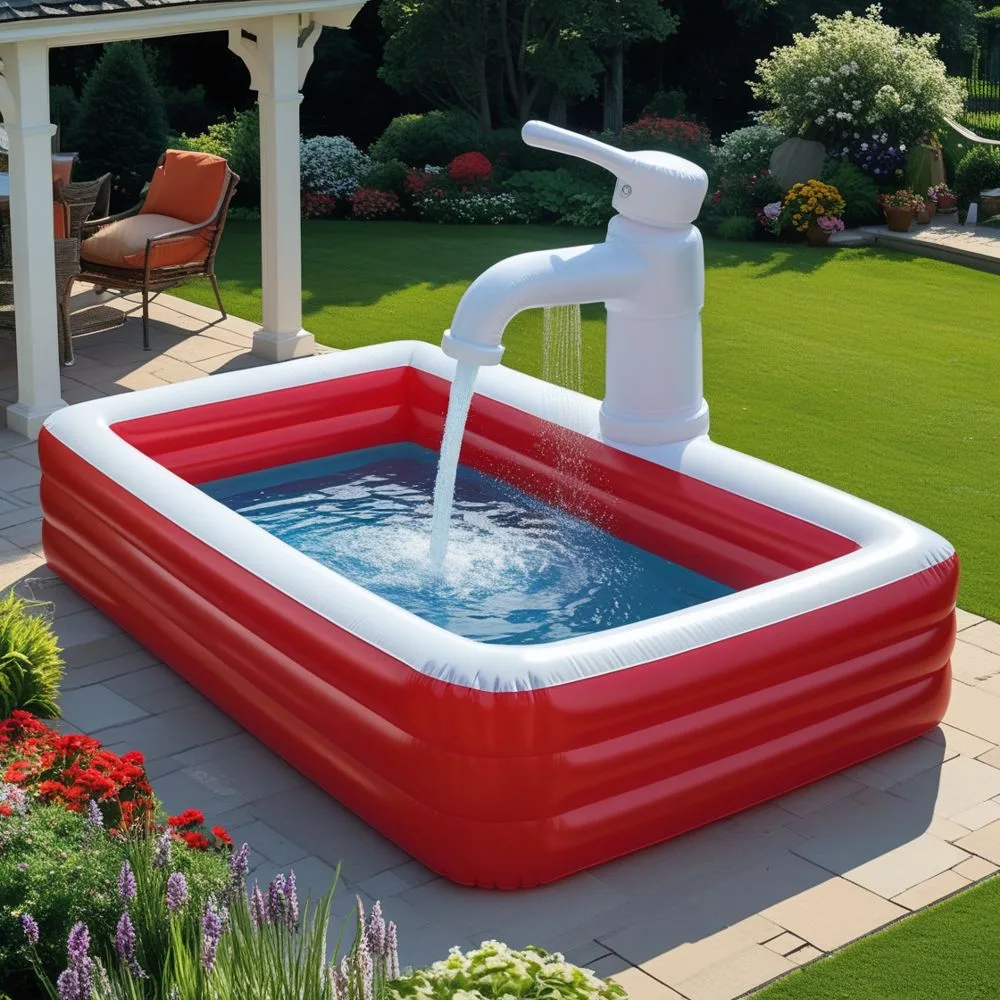Inflatable sink pools have emerged as a versatile solution for homeowners facing temporary plumbing challenges, renovation projects, or those simply seeking convenient alternatives to traditional fixed basins. These innovative products blend practicality with portability, offering an unexpected answer to common household dilemmas. Whether you’re renovating your kitchen, camping in the great outdoors, or seeking an emergency washing station during plumbing repairs, inflatable sink pools provide a flexible answer that traditional fixtures simply cannot match.
In recent years, these practical inflatable basins have gained popularity among homeowners, DIY enthusiasts, and practical-minded individuals looking for space-saving solutions. Their rise in popularity isn’t surprising given their versatility, affordability, and ease of use. This comprehensive guide will explore everything you need to know about inflatable sink pools, from their various applications to maintenance tips and purchasing considerations.
What Are Inflatable Sink Pools?
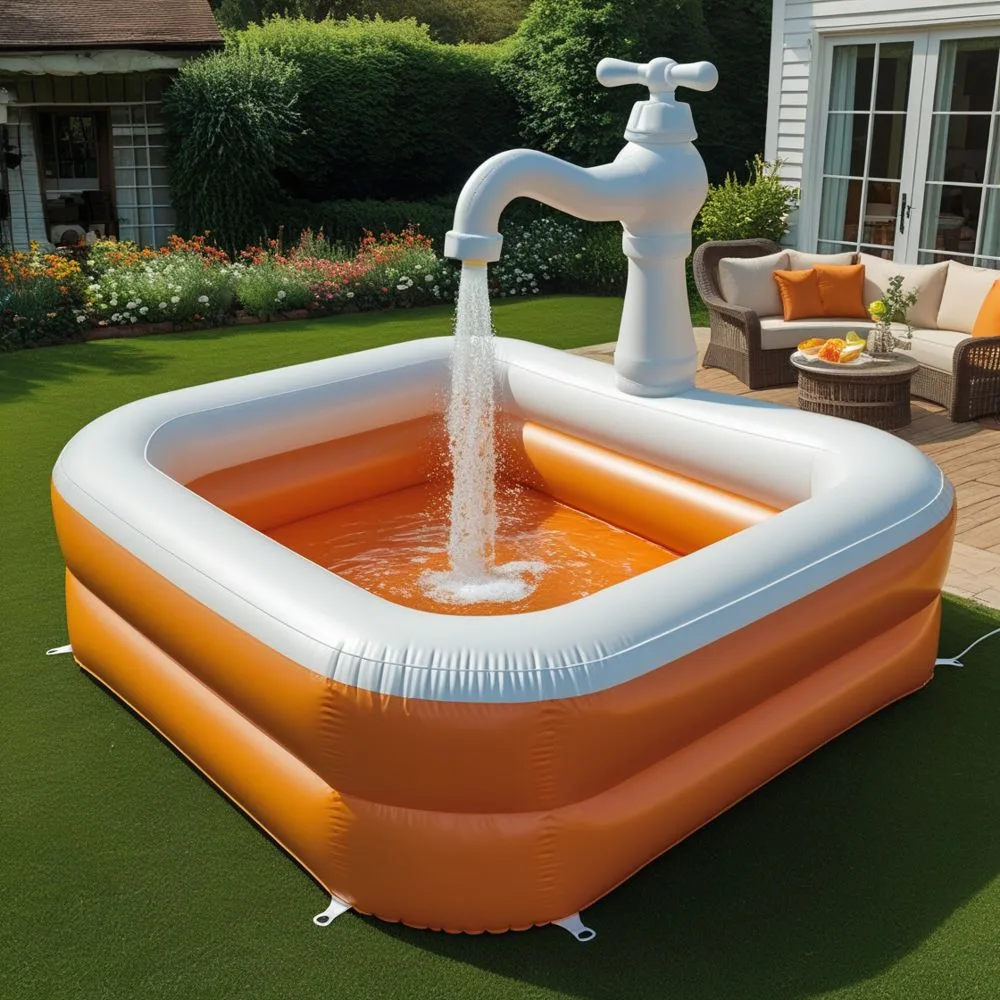
The Basics of Inflatable Basin Technology
At their core, inflatable sink pools are portable, temporary basins designed to hold water for washing, rinsing, or soaking purposes. Typically made from durable, waterproof materials like PVC or reinforced vinyl, these basins inflate to create a water-tight container that can serve many of the functions of a traditional sink. Most models feature drain plugs for easy water disposal and are designed to be lightweight when empty yet sturdy when filled.
Unlike permanent fixtures, inflatable sink pools require no installation, plumbing connections, or permanent modifications to your space. They can be inflated when needed and deflated for compact storage when not in use, making them ideal for situations where space is at a premium or where permanent solutions aren’t practical.
Key Features and Variations
The market offers a variety of inflatable sink pool options to suit different needs:
- Standard basin models: Basic designs that serve as temporary sinks
- Collapsible rim designs: Feature reinforced edges that maintain shape even when partially filled
- Multi-compartment units: Offer separate sections for washing and rinsing
- Specialized models: Include features like built-in soap holders, splash guards, or textured bottoms for added stability
Many inflatable sink pools also come with integrated drain systems, allowing users to direct wastewater away from the basin via attached hoses, making cleanup more convenient and controlled.
Practical Applications for Inflatable Sink Pools
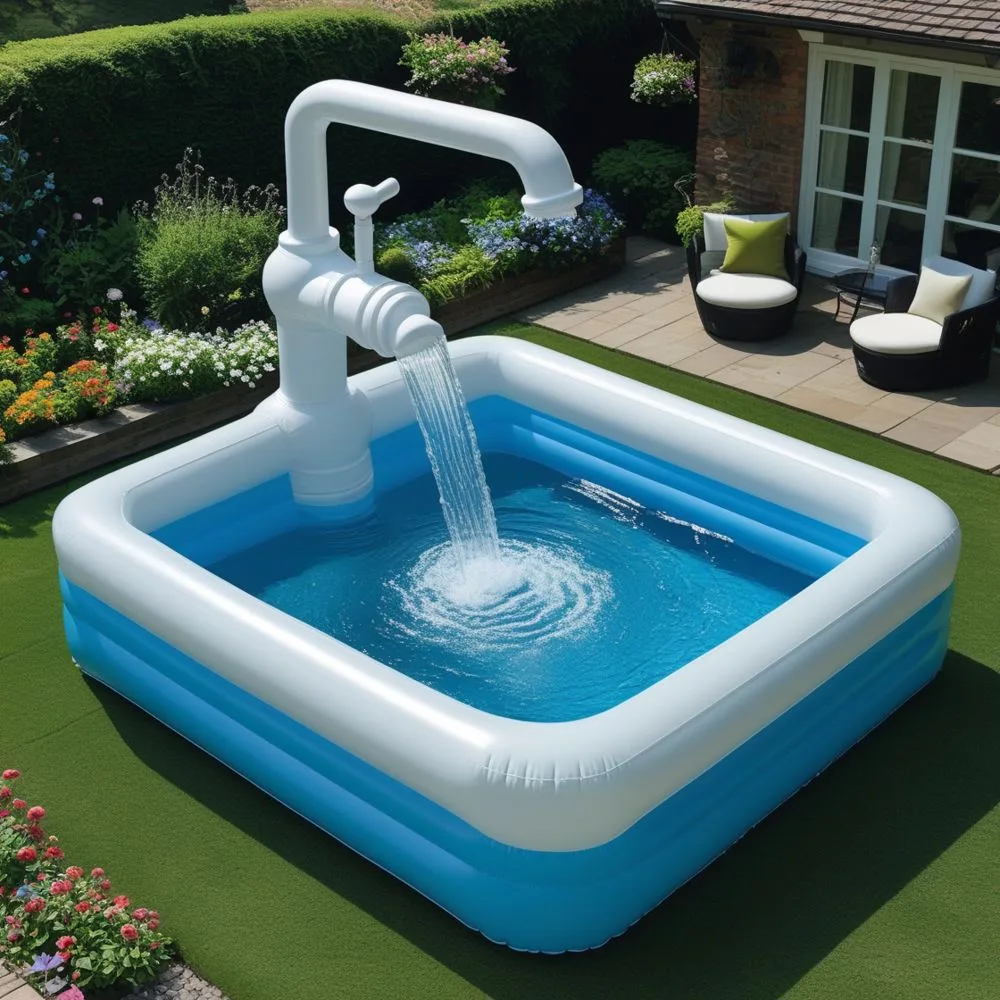
Kitchen Renovation Solutions
Kitchen renovations often leave homeowners without access to their primary sink for days or even weeks. Inflatable sink pools provide an excellent interim solution, allowing families to maintain essential food preparation and cleanup routines without significant disruption. These temporary basins can be placed on countertops, tables, or even in utility areas, providing a functional washing station during construction periods.
For extended renovations, some homeowners set up temporary kitchen stations with inflatable sink pools connected to portable water containers and positioned near drainage options, creating a makeshift but functional kitchen workspace.
Bathroom Remodeling Assistant
Similar to kitchen renovations, bathroom updates often leave residents without access to critical washing facilities. Inflatable sink pools offer a practical way to maintain personal hygiene routines during these projects. They can be placed in adjacent rooms or hallways, providing a temporary handwashing station or even a makeshift basin for essential grooming tasks.
Many renovation-focused inflatable sink models come with specially designed stands or supports, elevating them to comfortable heights for regular use during extended remodeling projects.
Outdoor and Camping Convenience
Beyond home renovations, inflatable sink pools have found enthusiastic adoption in the outdoor recreation community. Campers and outdoor enthusiasts appreciate their portability and versatility for:
- Washing dishes at campgrounds without dedicated facilities
- Creating hand-washing stations at remote sites
- Rinsing fruits and vegetables during outdoor meal preparation
- Cleaning gear and equipment away from natural water sources
Their lightweight nature when deflated makes them particularly valuable for backpackers and those with limited packing space, offering wilderness convenience without significant weight penalties.
Emergency Preparedness Applications
Inflatable sink pools have also gained recognition as valuable emergency preparedness tools. During natural disasters or unexpected plumbing failures, these portable basins provide crucial water access for:
- Personal hygiene maintenance during water service disruptions
- Conserving limited water supplies through controlled washing environments
- Creating sanitizing stations during health emergencies
- Collecting rainwater for non-potable uses
Many emergency management experts now recommend inflatable sink pools as part of comprehensive home emergency kits, particularly for families living in areas prone to natural disasters or infrastructure challenges.
Choosing the Right Inflatable Sink Pool
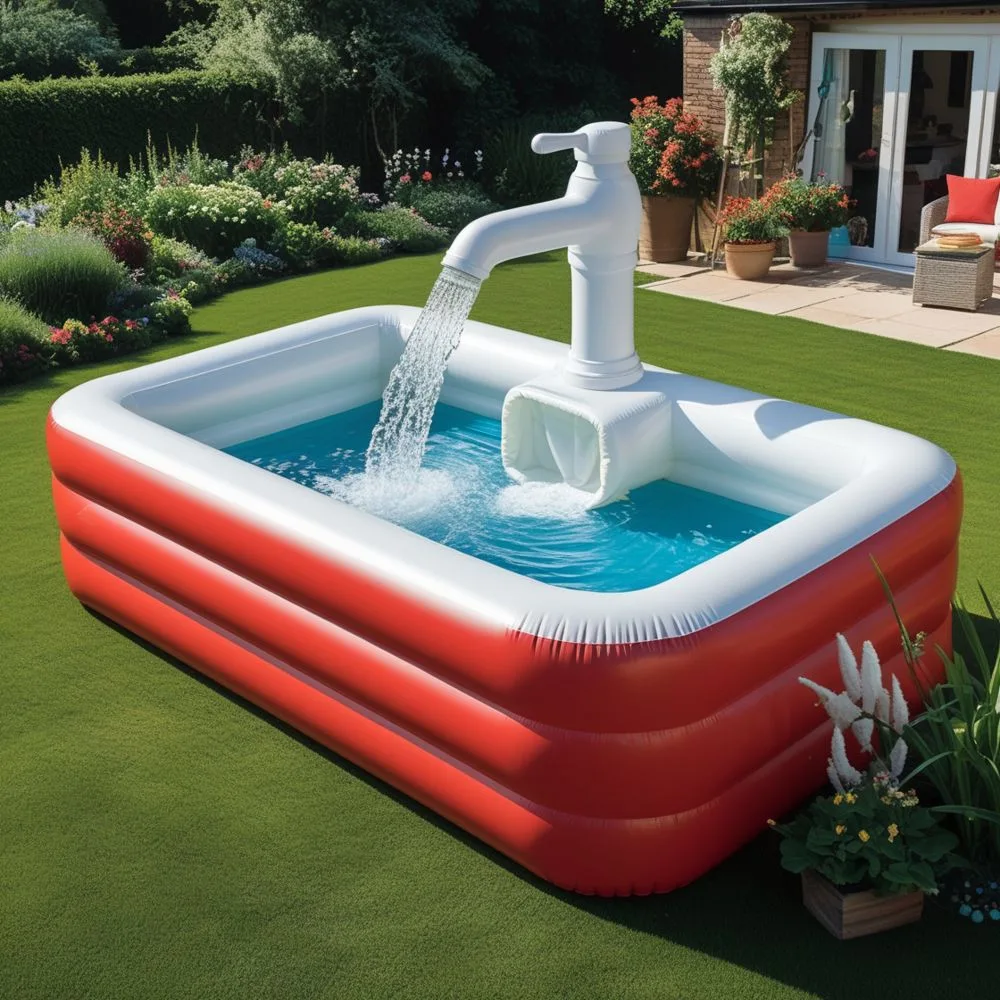
Material Considerations
The durability and functionality of an inflatable sink pool largely depend on its construction materials. Premium options typically feature:
- Heavy-duty PVC: Resistant to punctures and tears
- Reinforced seams: Prevent leakage at connection points
- UV-resistant coatings: For models intended for outdoor use
- Non-toxic, food-grade materials: Essential for models used for food preparation
When evaluating material quality, pay particular attention to thickness specifications (often measured in millimeters) and reinforcement at stress points like corners and drain connections.
Size and Capacity Factors
Inflatable sink pools come in various dimensions, and selecting the appropriate size depends on your specific needs:
- Compact models (typically 12-18 inches in diameter) work well for handwashing and light tasks
- Medium-sized basins (18-24 inches) accommodate most dishwashing and food preparation needs
- Large capacity units (24+ inches) are suitable for soaking larger items or handling higher-volume tasks
Consider not only the dimensions but also the depth of the basin, which affects both water capacity and splash containment. Models with higher sidewalls generally offer better splash protection but require more storage space when deflated.
Drainage Systems
Effective water management is crucial for practical use of inflatable sink pools. Look for:
- Strategically positioned drain plugs: Ideally at the lowest point of the basin
- Compatible drain hose attachments: For directing wastewater to appropriate disposal points
- Quick-release valves: For efficient emptying
- Secure drain covers: To prevent accidental drainage
Some premium models incorporate integrated filtration systems to catch food particles or debris, preventing clogging in drainage hoses and protecting plumbing systems when connected to household drains.
Additional Features Worth Considering
Depending on your anticipated use cases, several additional features might enhance your experience:
- Non-slip bottom textures: Provide stability on smooth surfaces
- Integrated soap dishes or dispensers: Add convenience for handwashing stations
- Dividers or compartments: Separate washing and rinsing areas
- Carrying handles: Facilitate transportation when filled
- Reinforced inflation valves: Ensure long-term air retention
- Color-coding: Helpful for designating specific uses in multi-basin setups
Setup and Installation Tips
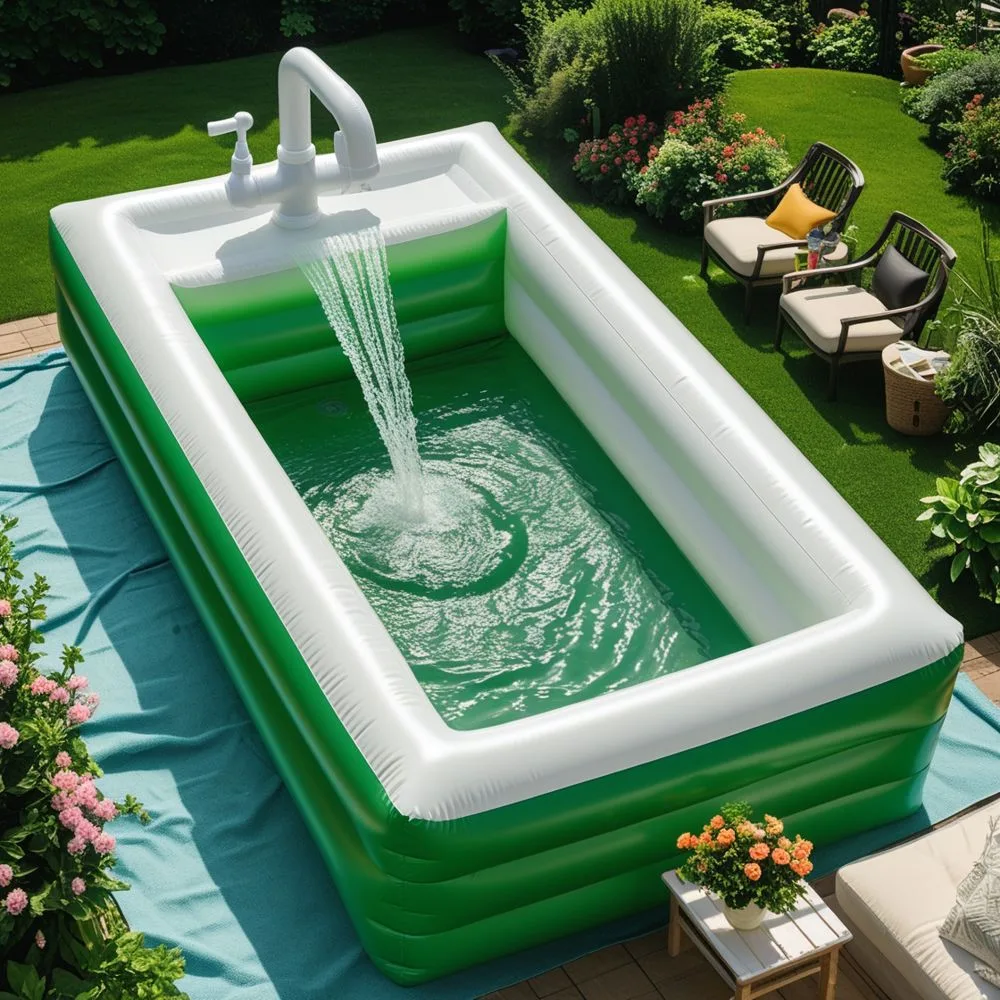
Optimal Placement Strategies
While inflatable sink pools require no permanent installation, thoughtful placement enhances their functionality:
- Select flat, stable surfaces that can support the weight of a water-filled basin
- Position near water sources when possible to simplify filling
- Consider drainage paths and proximity to appropriate disposal points
- Ensure adequate clearance for comfortable access and use
- For kitchen applications, place near food preparation areas but away from hot surfaces
For extended use scenarios, many users create dedicated stations with water containers positioned above the basin for gravity-fed flow and drainage containers placed below for wastewater collection.
Inflation Best Practices
Proper inflation maximizes the stability and functionality of your inflatable sink pool:
- Inflate in moderate temperatures when possible, as extreme cold can make materials stiff and extreme heat can cause over-expansion
- Use manual pumps rather than high-powered air compressors to avoid over-inflation
- Fill to firm but not rigid fullness, leaving slight give in the material
- Check for even inflation across all sections and compartments
- Test inflation valves for secure closure before adding water
Most quality inflatable sink pools include specific inflation guidelines; following manufacturer recommendations helps ensure optimal performance and longevity.
Water Management Techniques
Efficient water use and management maximize the utility of inflatable sink pools:
- For conservation purposes, fill only to the minimum necessary level for your task
- Consider using graduated buckets to measure precise water amounts
- Implement two-basin systems (one for soapy water, one for rinsing) to minimize water usage
- Position drain hoses to direct water to gardens or plants when appropriate
- For outdoor use, consider filtered greywater systems for environmentally conscious disposal
Maintenance and Care
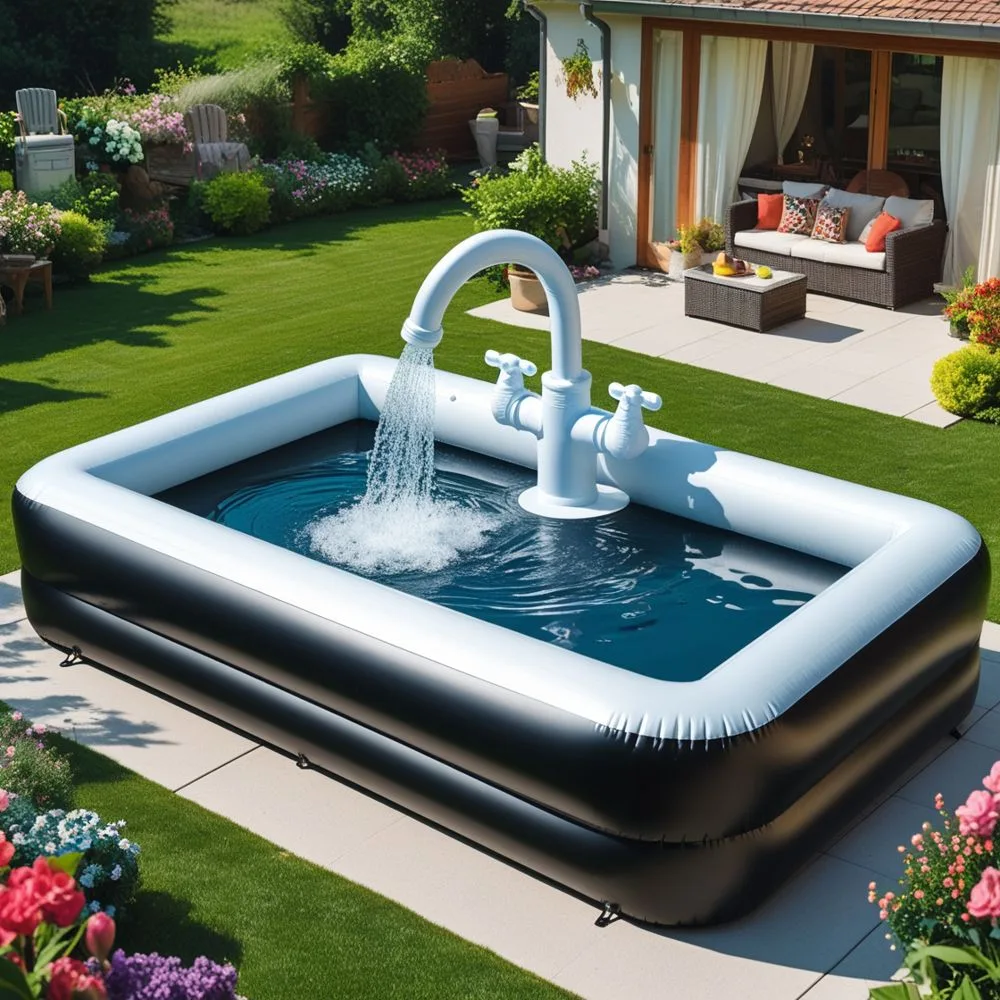
Cleaning Procedures
Regular cleaning extends the life of inflatable sink pools and ensures hygienic operation:
- After each use, drain completely and rinse with clear water
- For thorough cleaning, use mild soap and warm water with a soft cloth
- Avoid abrasive cleaners or scrubbers that might damage the material
- Pay special attention to corners, seams, and drain areas where residue might accumulate
- For models used with food, sanitize periodically with food-safe disinfectants
For stubborn stains or odors, a solution of vinegar and water (1:4 ratio) provides effective cleaning without damaging materials. Always rinse thoroughly after cleaning.
Storage Recommendations
Proper storage between uses prevents damage and prolongs the useful life of inflatable sink pools:
- Dry completely before deflation to prevent mold and mildew growth
- Fold along original crease lines to avoid creating new stress points
- Store in moderate temperatures away from direct sunlight
- Keep away from sharp objects that might cause punctures
- Consider using the original packaging or dedicated storage bags
Many users designate specific storage containers for their inflatable sink pools, adding moisture-absorbing packets to prevent humidity damage during extended storage periods.
Troubleshooting Common Issues
Even quality inflatable sink pools occasionally develop problems. Here are solutions for common issues:
- Small leaks: Most can be repaired with vinyl patch kits similar to those used for pool toys
- Drainage problems: Often resolved by clearing debris from drain plugs or straightening kinked hoses
- Stability concerns: Address by placing on non-slip mats or adding weight to specific sections
- Inflation difficulties: Check for valve issues or consider replacement valves if original equipment fails
- Odor development: Usually remedied with thorough cleaning and complete drying between uses
Environmental and Economic Benefits
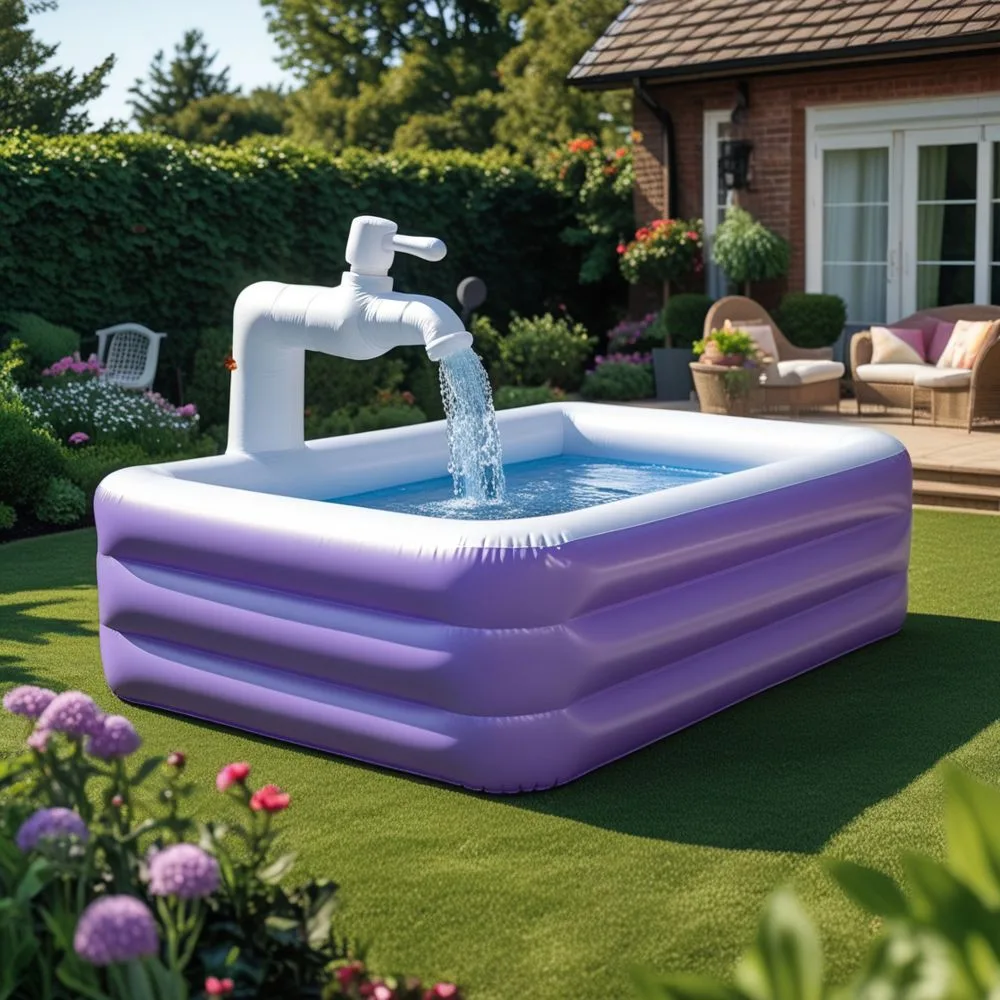
Water Conservation Advantages
Inflatable sink pools offer significant environmental benefits through water conservation:
- Contained washing environments minimize water waste compared to running taps
- Measured water usage encourages conservation mindfulness
- Greywater collection possibilities for appropriate reuse
- Reduced water footprint during renovation projects and emergency situations
Some environmentally conscious users report water usage reductions of 30-50% when implementing inflatable sink pool systems for routine tasks like dishwashing.
Cost-Effectiveness Analysis
Beyond environmental benefits, inflatable sink pools offer economic advantages:
- Significant cost savings compared to temporary plumbing installations during renovations
- Reduced water bills through more efficient usage
- Prevention of potential water damage during plumbing emergencies
- Extended lifespan of many models provides long-term value
- Multi-purpose utility across various applications maximizes return on investment
When compared to alternatives like disposable dishware during renovations or portable sink rentals, inflatable options typically provide substantial cost advantages over their useful life.
Future Trends in Inflatable Sink Technology

Integration with Smart Home Systems
The future of inflatable sink pools likely includes integration with emerging technologies:
- Water quality sensors to monitor cleanliness
- Automated drainage systems connected to smart home networks
- Temperature regulation features for improved comfort and utility
- Usage tracking to support conservation efforts
- Voice-controlled filling and draining operations
Several manufacturers are already developing prototypes with basic smart features, suggesting continued innovation in this space.
Sustainable Material Developments
Environmental consciousness is driving material innovation for next-generation inflatable sink pools:
- Biodegradable and compostable material options for eco-conscious consumers
- Recycled content incorporation in traditional PVC constructions
- Plant-based polymer alternatives to petroleum-derived materials
- Enhanced durability for longer lifecycles and reduced replacement frequency
- Antimicrobial surfaces that reduce cleaning chemical requirements
Conclusion
Inflatable sink pools represent a creative solution to common household challenges, offering versatility, convenience, and practicality across numerous applications. From serving as temporary replacements during renovations to providing essential functionality during emergencies or outdoor adventures, these innovative products fill a unique niche in modern home management.
Their combination of affordability, portability, and functionality makes them valuable additions to home emergency kits, renovation planning, and outdoor recreation equipment. As materials technology continues to advance, we can expect even more durable, environmentally friendly, and feature-rich options to emerge.
Whether you’re preparing for an upcoming home project, enhancing your emergency preparedness, or seeking practical solutions for outdoor activities, inflatable sink pools deserve consideration as flexible tools that adapt to your changing needs. Their growing popularity reflects their genuine utility in addressing real-world challenges with elegant simplicity.
By understanding the options available, maintenance requirements, and optimal use cases, you can maximize the benefits of these versatile products while contributing to water conservation efforts and household resilience. As with any practical home solution, the key lies in selecting quality products appropriate to your specific needs and maintaining them properly for maximum longevity and performance.

